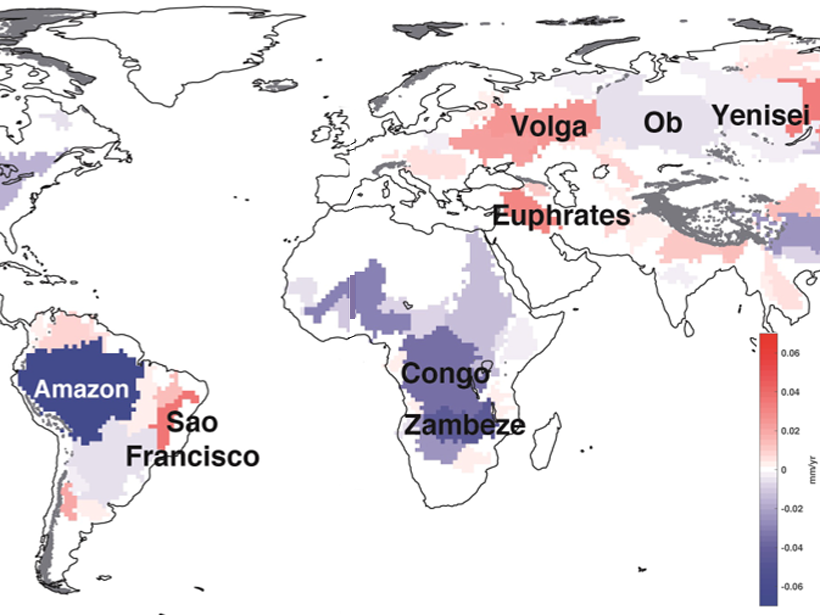Source: Geophysical Research Letters
Exactly how much global sea level will rise as the climate continues to change, and where that water will come from, is a question that continues to challenge scientists. Previous research struggled to close the budget of observed global sea level rise, with approximately 11 percent missing in attribution. Additionally, major uncertainties surrounded the sign of terrestrial water storage component: some studies contended that land has been accumulating water, while as others argued the opposite.
By introducing new corrections to estimates from Gravity Recovery and Climate Experiment (GRACE) satellite measurements, Kim et al. [2019] show that the loss of water from land can account for most of the missing contribution to the global sea level rise. Terrestrial water storage losses in high latitude basins in the northern hemisphere have a predominant contribution to the water rise – a finding consistent with research showing increased baseflows from these watersheds over the past decades.
Citation: Kim, J.‐S., Seo, K.‐W., Jeon, T., Chen, J., & Wilson, C. R. [2019]. Missing hydrological contribution to sea level rise. Geophysical Research Letters, 46. https://doi.org/10.1029/2019GL085470
—Valeriy Ivanov, Editor, Geophysical Research Letters
Text © 2019. The authors. CC BY-NC-ND 3.0
Except where otherwise noted, images are subject to copyright. Any reuse without express permission from the copyright owner is prohibited.

